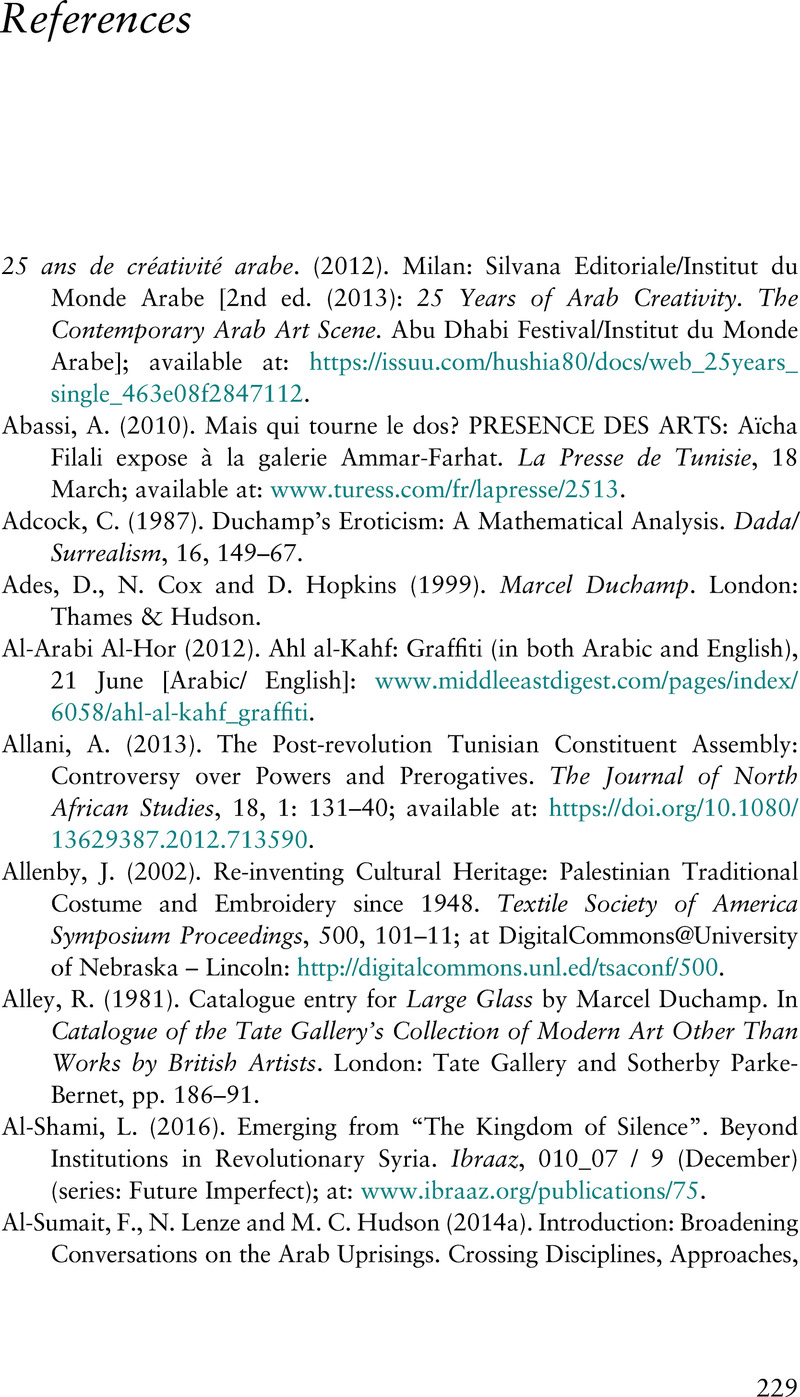Book contents
- Art and the Arab Spring
- The Global Middle East
- Art and the Arab Spring
- Copyright page
- Contents
- Figures
- Acknowledgements
- Introduction
- 1 Aesthetics of Revolution and Infra-thin Critique
- 2 Contingency and Resistance: Exceeding Icons through Matter and Motion
- 3 Contingent Encounters: Artists, Artisans and Amateurs
- 4 Corporeal Resistance and Aesthetics of the Interface
- Conclusion
- References
- Index
- References
References
Published online by Cambridge University Press: 07 July 2021
- Art and the Arab Spring
- The Global Middle East
- Art and the Arab Spring
- Copyright page
- Contents
- Figures
- Acknowledgements
- Introduction
- 1 Aesthetics of Revolution and Infra-thin Critique
- 2 Contingency and Resistance: Exceeding Icons through Matter and Motion
- 3 Contingent Encounters: Artists, Artisans and Amateurs
- 4 Corporeal Resistance and Aesthetics of the Interface
- Conclusion
- References
- Index
- References
Summary

- Type
- Chapter
- Information
- Art and the Arab SpringAesthetics of Revolution and Resistance in Tunisia and Beyond, pp. 229 - 244Publisher: Cambridge University PressPrint publication year: 2021

